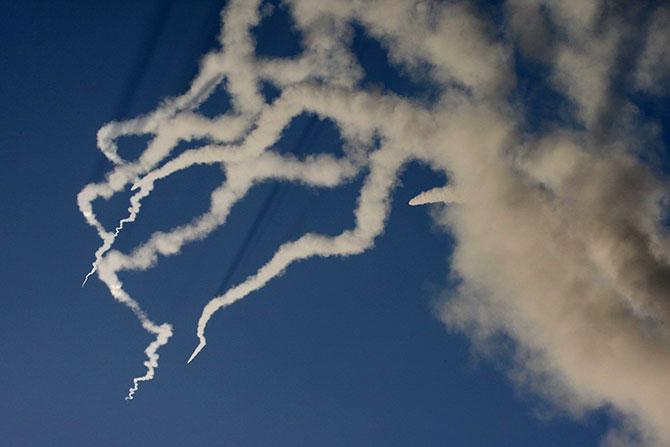
Iran’s ballistic missile program is progressing at an alarming pace. As far back as December 2012, the Congressional Research Service Reports said Iran had the “largest inventory of ballistic missiles in the Middle East” and was “expanding the scale, reach and sophistication of its ballistic missiles, many of which are inherently capable of carrying a nuclear payload.” In less than a generation, Tehran managed to transform itself from a “nonplayer” to a “significant missile power.”
While the 2015 nuclear deal framework with world powers has stalled any plan on Iran’s part to develop nuclear weapons, the deal has not stalled Tehran’s ballistic missile development program. In fact, as Iran progressed with this program, many analysts argued in favor of including the program within the nuclear deal. Despite United Nations sanctions, Iran was able to advance its ballistic missile development program. As if to prove a point, as the nuclear deal neared the finish line, Iran was test-firing ballistic missiles – to send a message that it considers this capability as a part of its conventional military arsenal, which would not be negotiated away along with its nuclear program.
At present, Iran’s ballistic missile arsenal includes short-range missiles with a distance of up to 620 miles. In 2009, the Obama administration revealed that Iran was developing shorter-range missiles more rapidly than previously projected, compared to its longer-range missile programs. Tehran also possesses medium-range missiles that can travel between 620 and 1,860 miles, and intermediate-range missiles ranging from 1,860 to 3,400 miles. In addition – and alarmingly – Iran is not only focusing on liquid-fuel propelled ballistic missiles, but also solid-fuel propelled ones.
The development program
The Iranians are reported to have developed advanced missile technologies through the country’s Aerospace Industries Organization, and also through scientific committees, research centers and available industries. Iran’s liquid-fuelled technology is mainly derived from North Korea’s Scud-category missile system, while its solid-fuelled missiles are derived from the Chinese military.







%20resized.png)
